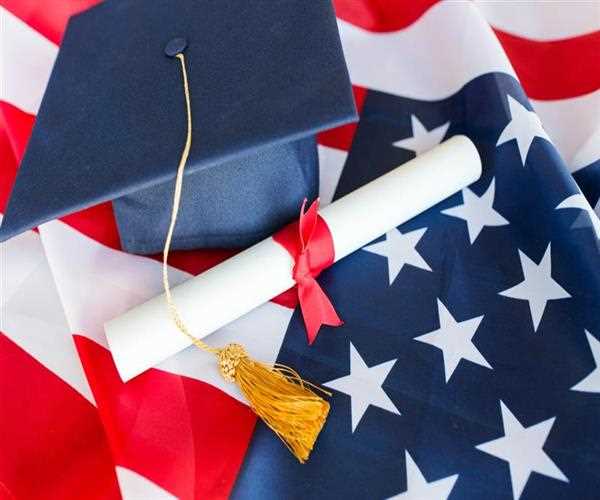Search here

15-May-2023 , Updated on 5/15/2023 2:44:13 AM
US Education System- Challenges and Opportunities
The U.S. education system has long been a subject of debate and scrutiny. While the system has many strengths, it also faces significant challenges in terms of equity, access, and quality. In this view, we will explore some of the key challenges facing the U.S. education system and the opportunities for improvement.
Challenge 1: Equity
One of the biggest challenges facing the U.S. education system is ensuring equity for all students. Inequities in funding, resources, and opportunities often result in significant achievement gaps between different groups of students. Students from low-income families, students of color, and students with disabilities are often the most affected by these disparities.
To address these issues, many education reformers are pushing for more equitable funding models and policies that provide all students with access to high-quality education. This includes increasing investments in schools in underserved areas, expanding access to early childhood education, and providing additional support for students who are struggling academically.
Challenge 2: Access
Another major challenge facing the U.S. education system is ensuring access to education for all students. While the country has made significant strides in increasing access to education in recent years, there are still many barriers that prevent some students from accessing high-quality education.
One of the biggest barriers to access is the rising cost of higher education. Many students and families struggle to afford the cost of tuition and other expenses, which can limit their options and opportunities for post-secondary education. Additionally, some students may face barriers to accessing education due to geographic or other factors, such as living in rural areas or having limited English proficiency.
To address these issues, policymakers and educators are exploring a range of solutions, including expanding financial aid programs, increasing investment in public education, and leveraging technology to expand access to education.
Challenge 3: Quality
Ensuring quality education for all students is another major challenge facing the U.S. education system. While the country has made significant progress in improving educational outcomes in recent years, there is still much work to be done to ensure that all students receive high-quality instruction.
One of the biggest challenges facing educators is the need to keep up with the changing demands of the modern workforce. As technology continues to reshape the economy, there is a growing need for workers with strong skills in areas such as science, technology, engineering, and math (STEM). Educators are working to develop new curricula and instructional strategies that prepare students for these changing demands.
Another challenge facing educators is the need to address the diverse needs of today's students. Students come to the classroom with a wide range of backgrounds, experiences, and learning styles, and it can be a challenge to provide instruction that meets the needs of all students.
Opportunity 1: Innovation
One of the biggest opportunities for the U.S. education system is the potential for innovation. Advances in technology and pedagogy have the potential to transform the way that education is delivered and accessed.
One area where innovation is already making a difference is in the development of personalized learning technologies. These technologies use data analytics and other tools to provide customized instruction that is tailored to the needs and abilities of each student. By providing personalized instruction, these technologies have the potential to improve educational outcomes and ensure that all students have access to high-quality instruction.
Opportunity 2: Collaboration
Another opportunity for the U.S. education system is the potential for increased collaboration between educators, policymakers, and other stakeholders. By working together, these groups can develop strategies and policies that promote equity, access, and quality in education.
Collaboration can take many forms, from partnerships between schools and local businesses to collaboration between school districts and state education agencies. By working together, these groups can share best practices, leverage resources, and develop more effective solutions to the challenges facing the education system.
Opportunity 3: Focus on outcomes
A third opportunity for the U.S. education system is the potential to focus more on outcomes rather than inputs. Traditionally, the education system has focused on inputs such as funding levels, teacher qualifications, and class sizes. While these inputs are important, they do not necessarily guarantee that students will achieve the desired outcomes.
To improve outcomes, educators and policymakers are exploring new approaches that focus on measurable results. This includes using data to track student progress and identify areas for improvement, as well as developing new accountability measures that focus on outcomes rather than inputs.
The U.S. education system faces significant challenges in terms of equity, access, and quality. However, there are also many opportunities for improvement, including increased collaboration, innovation, and a focus on outcomes. By working together and developing new strategies and policies, educators and policymakers can ensure that all students have access to high-quality education and the opportunity to succeed.

SEO and Content Writer
I am Drishan vig. I used to write blogs, articles, and stories in a way that entices the audience. I assure you that consistency, style, and tone must be met while writing the content. Working with the clients like bfc, varthana, ITC hotels, indusind, mumpa, mollydolly etc. has made me realized that writing content is not enough but doing seo is the first thing for it.
Join Our Newsletter
Subscribe to our newsletter to receive emails about new views posts, releases and updates.
Copyright 2010 - 2025 MindStick Software Pvt. Ltd. All Rights Reserved Privacy Policy | Terms & Conditions | Cookie Policy